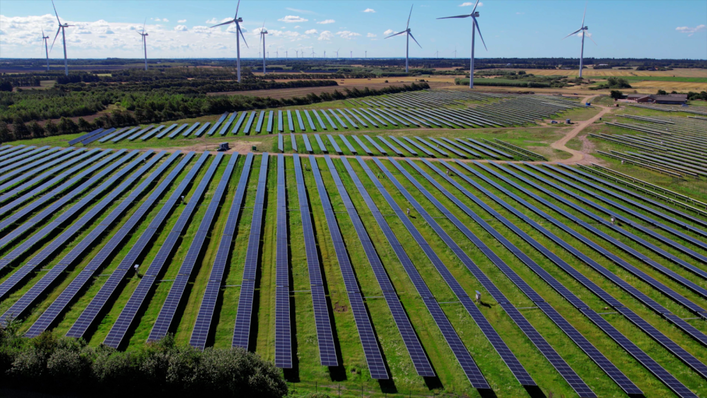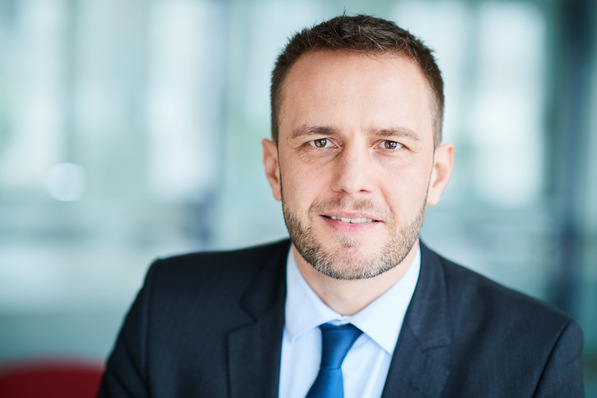Hansainvest is increasingly active in project financing of wind farms or solar parks. What size do such projects reach?
Ludger Wibbeke: A normal volume per park starts with us at five million euros, but the projects can also be up to 500 million euros in size, such as the recent solar park in Witznitz, in Brandenburg. In contrast, the minimum volume per investment fund is usually 50 million euros.
How big is the company?
We have around 320 employees and can look back on over 50 years of experience in the investment business. We were founded jointly by Vereins- und Westbank and Iduna Lebensversicherung in 1969 and have been 100 percent owned by Signal Iduna since 1991. Nothing has changed since then.
In which areas do you focus?
Our focus is on real assets and financial assets. Here we advise and support fund companies and asset managers, for example, in the launch and ongoing administration of such investment funds. Real estate and infrastructure projects such as renewable energies are an important part of our business on the real assets side. The latter, which include renewable energies, are gaining strongly in importance.
Solar gold instead of concrete gold? Why is investor interest growing?
High interest rates are making investments in real estate less lucrative because debt financing is becoming more expensive. Until now, real estate was the investor's favorite child, but expensive loans are making this business more difficult. Investors are thinking and planning for the long term.
Investments in wind power or solar plants are attractive alternatives for them. This is necessary because we need a lot more money if we want to master the energy transition and become independent of fossil imports.
The high interest rates are causing some banks to stumble, and this is currently keeping the financial markets busy. In addition, the state financial supervisory authority has a say in the matter. Where is the gap opening up for investing money in renewable energies?
The energy turnaround with the massive expansion of renewable energies cannot be financed from public funds alone. Private capital is needed here. Only a stable financial sector can function. Banks are important here, but not elementary.
Institutional investors such as insurance companies have a strong interest in investing in renewable energies. So new projects have long since required not only traditional bank loans, but also fund solutions for institutional investors.
Since the financial crisis 15 years ago, regulations have become stricter. Is this hampering investment in solar energy?
In fact, legislators have tightened banking regulations in recent years. In particular, the requirements for existing equity capital have been increased. This is intended to prevent credit institutions from getting into difficulties and endangering the stability of the financial system.
That sounds reasonable...
In principle, such a reliable regulatory framework is the basis for a stable and strong financial sector. It in turn enables banks to finance renewable energy projects. However, the framework must not restrict banks too much in their ability to act.
What measures do you consider sensible?
To ensure that the increased equity requirements do not restrict lending too much, it would be conceivable, for example, to lower them specifically for financing sustainable investments. The banking association suggests this in an analysis. This would be possible because credit institutions in this country are very well capitalized and resilient. There is no reason to tie up more capital than necessary. Such a measure would also increase the profitability of sustainable investments and create scope for financing.
Based on your experience, what are the suggested ways to finance solar projects?
Solar farm developers should definitely consider alternative sources of financing. Here, the Fund Location Act, which came into force in Germany in August 2021, offers new opportunities. Until now, open-end fund structures were only permitted for real estate.
What opportunities does the new law open up?
With the new law, they may also be used for the infrastructure asset class. This includes energy parks with wind power and solar technology. This is where financial service providers such as Hansainvest come into play - so-called service KVGs - which, as specialized service providers, can act as a platform for the launch and administration of appropriate funds supervised by Bafin and thus act as a link between project developers and investors.
Sounds complicated, but I'm not an expert....
It sounds more complicated than it is. The fact that the energy transition is now becoming interesting for private and institutional investors on a large scale is a necessary trend. But it is also important that this private capital is needed because alternative financing options such as banks are definitely not available to the same extent. This creates a win-win situation for both sides, those seeking capital and those providing it. (HS/hcn)








